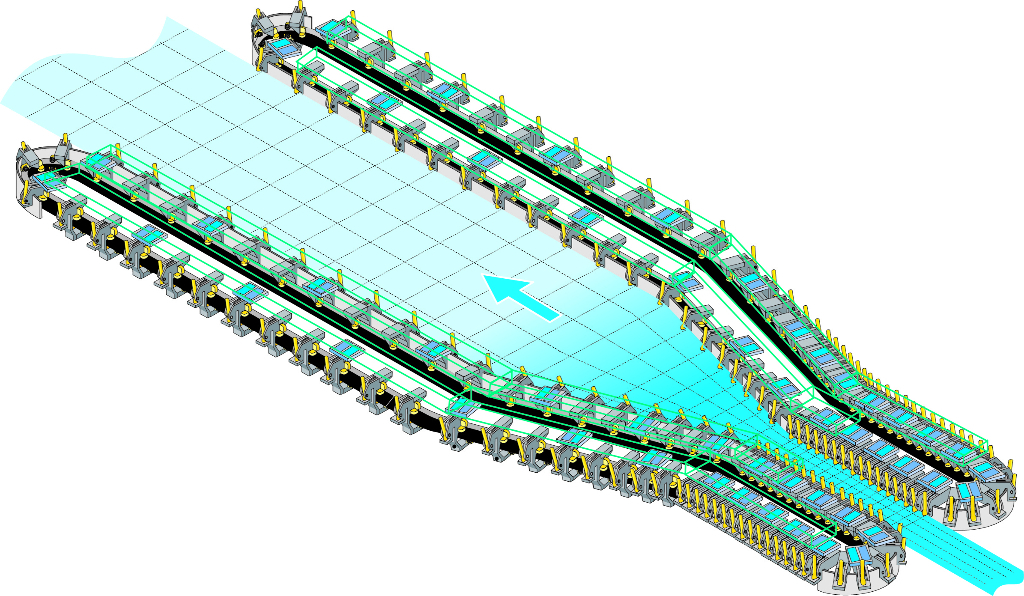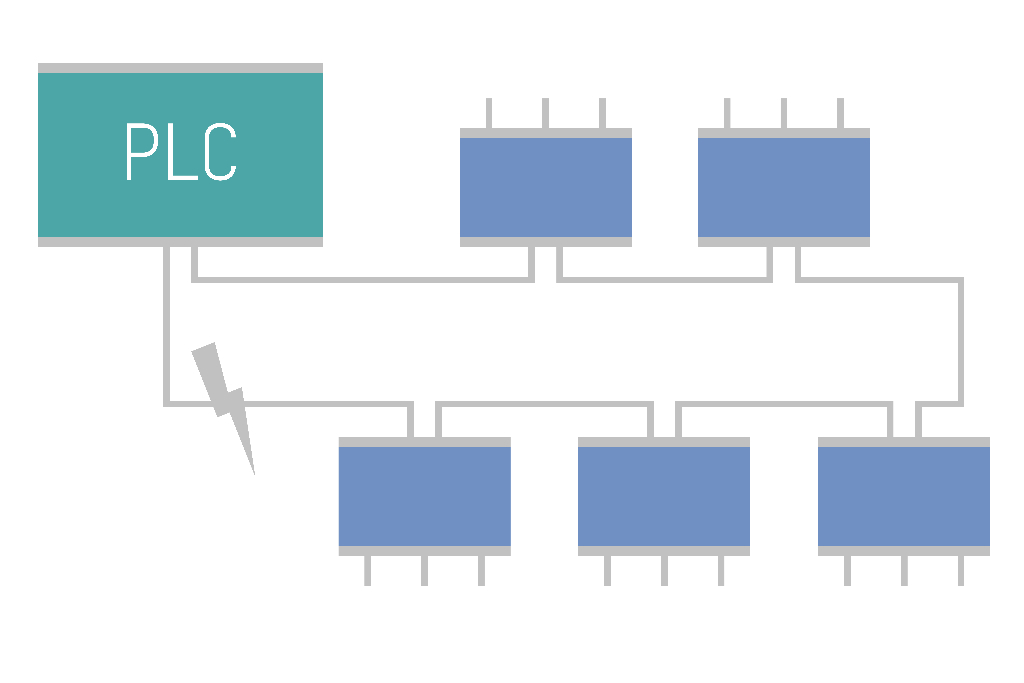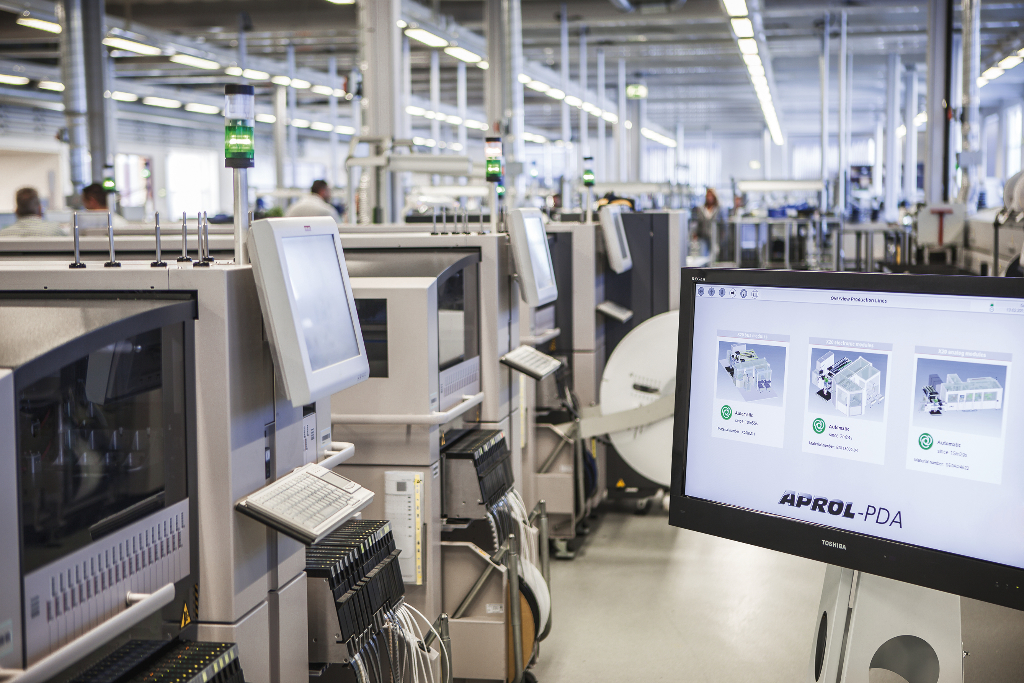
From the plant floor to the control room – as factories grow smarter, so too grows the amount of data being transmitted and processed. Conventional fieldbus systems can't keep up with the surge in volume – and are being replaced by Ethernet-based solutions such as real-time POWERLINK and OPC UA for higher-level communication.
For machine manufacturers who take advantage of this unprecedented flexibility and productivity, the transition could be a profitable one. "This means more than just boosting the level of automation, however," explains Stefan Schönegger, managing director of the Ethernet POWERLINK Standardization Group (EPSG). "It also means pursuing a more dynamic, networked approach to production."
Fieldbuses at their limits
Conventional fieldbus systems were not designed to handle the deluge of big data. Nevertheless, many machine manufacturers have attempted to get by with conventional fieldbus technology – laying out separate networks for motion control, safety and sensor data. "Not only are these parallel systems expensive and high-maintenance, they are also difficult to synchronize and prone to errors," describes Schönegger. This explains the increasing popularity of more powerful Ethernet-based networks.
"In terms of both speed and bandwidth, industrial Ethernet runs circles around conventional fieldbus systems," says Schönegger. As the fourth industrial revolution progresses, however, another problem is becoming evident. The number of network nodes found in each machine is exploding – thanks to the proliferation of intelligent sensors, auxiliary axes and the extensive safety solutions needed for human-robot collaboration. Typically, as you increase the number of network nodes, systems become slower as a result.
POWERLINK is different. By broadcasting data simultaneously to every station in the network, this technology eliminates the delays that occur when all traffic is funneled through a central location. The deviation from the clock signal, known as jitter, is less than 1 microsecond. "Even for a real-time network, this is an outstanding level of precision," says Schönegger.
Room for big data
Not every industrial Ethernet protocol is cut out for Industry 4.0. Some were developed with the focus solely on cycle time, ignoring the huge volumes of data that a bus system must sometimes transmit. A large share of the data in a real-time network is not time-critical, however. This includes service data for device configuration and diagnostics, process data for archiving, and safety data or video data from a surveillance camera – all of which contribute to the general trend known as big data. POWERLINK transmits this data during its asynchronous phase, a part of the cycle that has no influence on time-critical data. If necessary, protocols such as TCP/IP can be implemented in this asynchronous phase.
Adaptable network tailored to the machine
Typically, a machine or plant will have only a small number of truly time-critical processes, such as motion control tasks. Using a procedure known as multiplexing, it is possible to poll the time-critical nodes in every cycle, whereas general status information such as temperature values can be read much less frequently. This optimizes data volume and perfectly adapts the duration of a cycle to the application at hand. "There's one particularly impressive example of how effective this concept can be," recounts Schönegger. "On a two-dimensional film stretching machine from Brückner Maschinenbau, we synchronized 728 axes with a cycle time of 400 microseconds using POWERLINK. That's a world record."

Free choice of topology with no special hardware
Although Ethernet itself places no constraints on topology, most industrial Ethernet systems require special hardware to implement certain types of networks. With POWERLINK, complete freedom of topology comes with no hardware strings attached. Bus, ring or tree structures can be mixed, matched, modified and expanded as needed to tailor the network to the layout of the machine. "Nodes can even be added to or removed from the network on the fly during operation," says Schönegger. "In an age of agile manufacturing, modular machinery and distributed intelligence – the hallmarks of Industry 4.0 – this is a factor that should not be underestimated."
The increasing levels of flexibility and modularity often demand a distributed control system, which is no problem for POWERLINK. Since data isn't funneled through a central location, any node in the network can communicate with any other node – directly and without delay. Of course, the high performance of a POWERLINK network means centralized control systems are equally possible. As Schönegger puts it: "POWERLINK leaves the design of the control system right where it belongs – in the hands of the machine manufacturer."
Ring redundancy with one extra cable
In critical applications, a network failure can result in costly damages or even endanger human operators. Such machines and systems are frequently equipped with extensive redundancy solutions to ensure that this cannot occur. "With POWERLINK, ring redundancy can be implemented at very little cost," explains Schönegger. All that's needed is an extra cable to close the line into a ring. Network disruptions are detected and circumvented via the redundant communication path from one cycle to the next.
POWERLINK is also remarkably robust against electromagnetic disturbances, which further contributes to high machine availability and allows the network to include slip rings and wireless connections. With slip rings from the companies Cobham or Schleifring, POWERLINK can even transmit data at 100 Mbit/s alongside the 24-volt power supply and the 750-volt DC bus without any impairment in network stability. Nothing stands in the way of a seamlessly networked smart factory.

100% open
In order to operate reliably and optimize costs, machine manufacturers place high value on the independence to choose between alternative suppliers. "POWERLINK is one hundred percent open technology," notes Schönegger. The protocol stack is published as open source software under the BSD license and has already been downloaded more than 30,000 times from the SourceForge platform (www.sourceforge.net). Through its openness, POWERLINK offers maximum investment protection.
As a pure software stack, POWERLINK can run on any hardware platform. The network infrastructure can be built from commercially available Ethernet hardware as needed for the application. This results in a lower total cost of machine ownership than with any other industrial Ethernet.

Gigabit Ethernet at no added cost
POWERLINK is fully compliant with the IEEE 802.3 Ethernet standard. "This compatibility is a huge advantage for POWERLINK users," says Schönegger. As Ethernet technology continues to evolve, they are able to benefit from the latest advancements. With complex machines generating more and more data, it's only a matter of time until the current bandwidth of 100 Mbit/s runs up against its limitations. By maintaining full compliance with the Ethernet standard, POWERLINK ensures that, when the time comes, upgrading to Gigabit Ethernet will be quick and painless. "For Ethernet-based networks that deviate from the standard, increased bandwidth will come at the cost of extensive development and possibly even new proprietary hardware."
- Minimum cost of ownership
- Maximum investment protection
- Maximum system performance
- Maximum freedom for the user

"POWERLINK is the ideal network for Industry 4.0 communication." Stefan Schönegger, Managing Director, EPSG